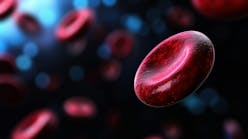This issue’s Continuing Education story describes and compares conventional and molecular approaches to the detection of viral pathogens. It is a timely and important topic for clinical laboratory leaders, and the editors of MLO are proud to publish as comprehensive and lucid a presentation as Drs. Wu and Garner of UCLA have provided. I ought to mention, once in a while, how fortunate we are to feature contributing writers of this caliber for the benefit of the readers of MLO.
As my colleagues and I prepared this article for publication, I found myself thinking that, more broadly, the topic of viral diseases is receiving an extraordinary amount of attention these days in both professional and popular journalism. The subject has, so to speak, gone viral:
The ongoing Ebola outbreak in Africa, the worst since that virus was first identified in 1976 (and the mortality may surpass the 280 deaths recorded in that epidemic), has been receiving considerable media attention. The Centers for Disease Control and Prevention (CDC) has not issued any advisories for U.S. travel to Guinea, Sierra Leone, or Liberia, but the situation is being closely watched. (That is the Ebola virus on the cover of this issue, by the way.)
Coverage of the Middle Eastern Respiratory Syndrome coronavirus (MERS-CoV) stepped up in the United States several weeks ago when two people who traveled from Saudi Arabia to the U.S. were confirmed to have MERS-CoV infection. Early reports that one of them had spread the disease to an American citizen—it would have been the first incident of person-to-person transmission in the U.S.—turned out not to be true, but public awareness was greatly increased. The CDC noted the use of both conventional serological testing (ELISA, IFA, and neutralizing antibody assay) and PCR testing to confirm potential cases of MERS-CoV.
The mosquito-borne chikungunya virus (which is not fatal, but as one entomologist put it, “It’s a virus that when people get it, they wish they were dead”) arrived in the Western Hemisphere only last December, but more than 4,400 cases have since been confirmed, and 100,000 suspected, in Caribbean nations and territories. Last month, health departments in Florida, Indiana, and Nebraska confirmed that travelers have brought it to the United States. There are concerns that chikungunya could become established in the U.S., as, for instance, West Nile virus has. IFA testing is used to confirm chikungunya.
As I write this, news is breaking from India that an unknown virus which causes encephalitis has claimed the lives of at least eight children in West Bengal. Some researchers have linked the illness to eating litchi fruit.
And, of course, news about HIV, hepatitis, and the next flu season continues to be part of Americans’ everyday life.
So, however, does a growing awareness of the role that clinical laboratory testing plays in helping clinicians fight the battle against viral organisms—as in the case of MERS, for instance. The work of labs, across the nation and throughout the world, is a part of the ongoing battle too.
From Sunday, July 27, through Thursday, July 31, Chicago will host the AACC Annual Meeting and Clinical Lab Expo. The meeting will feature educational sessions on a wide variety of important topics; the Lab Expo will provide conference attendees with an opportunity to speak with industry leaders and see their latest offerings. The Exhibit Hall will be open from 9:30 a.m. to 5 p.m. on Tuesday and Wednesday, and from 9:30 a.m. to 2 p.m. on Thursday.
MLO will be one of some 700 exhibitors, and we look forward to meeting our readers. We welcome any and all feedback, including input regarding topics that would be valuable for us to include on the 2015 Editorial Calendar. Will you be at AACC? Come see us at Booth 2472.






